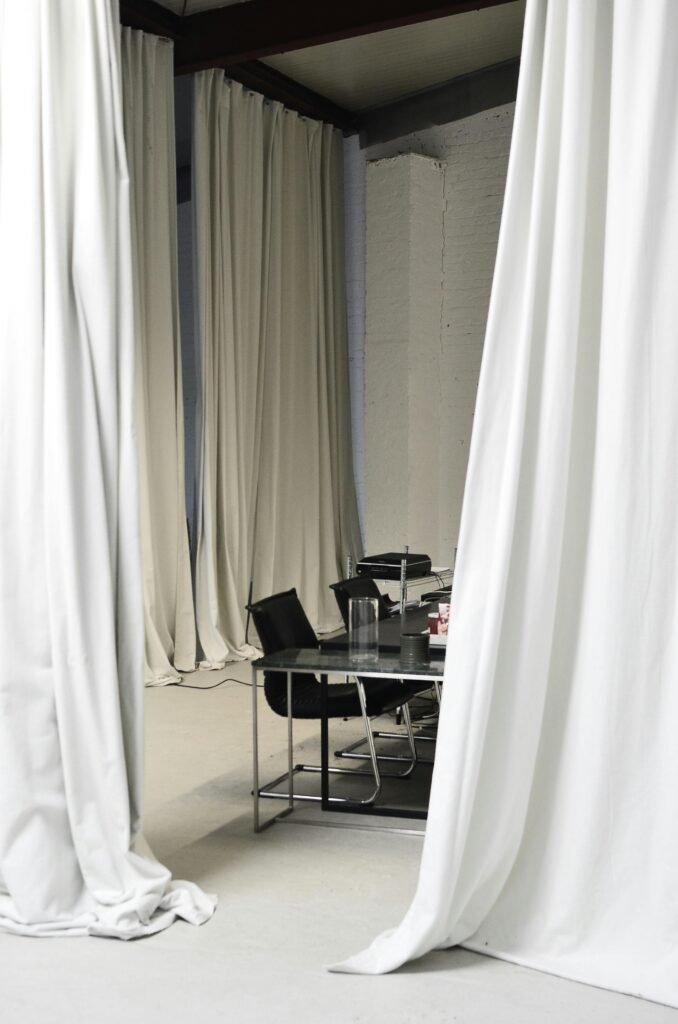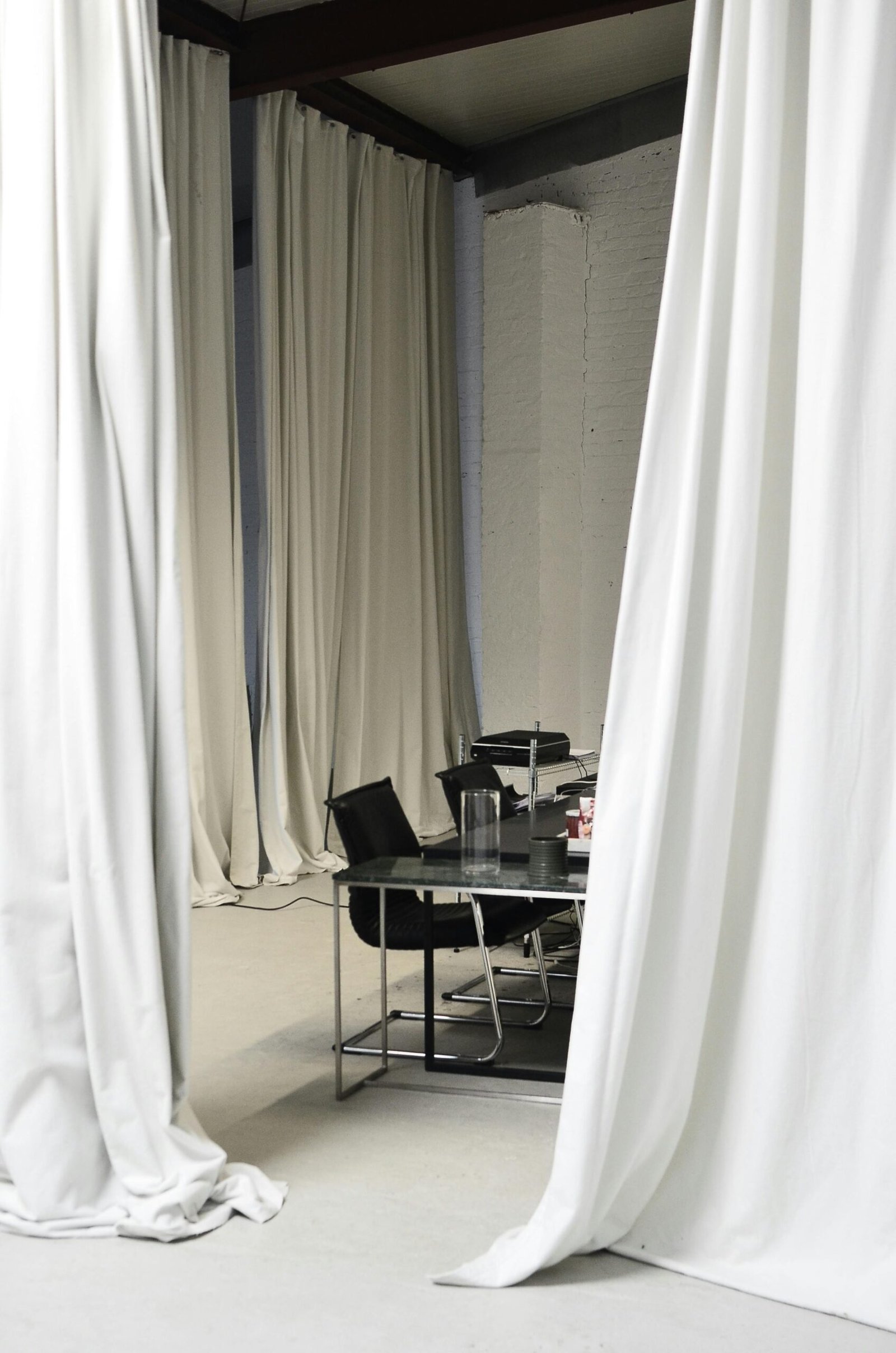Living in a limited space can often feel overwhelming, especially when it comes to organizing your belongings. The challenge of creating order in a compact space can be daunting, but fear not! In this article, you will discover essential tips and tricks to help you effectively organize your belongings, maximize storage options, and transform your small space into a functional and harmonious oasis. Say goodbye to clutter and hello to a well-organized and inviting living environment.

This image is property of images.pexels.com.
Decluttering
Sorting and categorizing items
When it comes to decluttering your space, the first step is to sort and categorize your belongings. Start by going through each room and gathering similar items together. This will help you see what you have and make it easier to decide what to keep and what to get rid of. As you sort, ask yourself if each item is something you truly need and if it brings you joy or serves a practical purpose in your life. Be honest with yourself and let go of items that no longer serve a purpose.
Getting rid of unnecessary items
Once you have sorted and categorized your items, it’s time to get rid of the unnecessary ones. This can be a difficult step for some people as they may feel attached to certain belongings. However, it’s important to remember that decluttering is about creating a space that is functional and enjoyable to be in. Consider donating or selling items that are in good condition but no longer needed. Alternatively, you can recycle or responsibly dispose of items that cannot be reused. By letting go of unnecessary items, you will create space for the things that truly matter to you.
Creating designated storage spaces
After decluttering, it’s essential to create designated storage spaces for the items you have decided to keep. This will help keep your space organized and prevent clutter from accumulating in the future. Consider assigning specific areas or containers for different categories of belongings. For example, have a designated spot for your books, a drawer for office supplies, and bins for seasonal decorations. By giving everything a home, you’ll know exactly where to find items when you need them, which will save you time and reduce stress.
Utilizing vertical space
Installing wall shelves
One effective way to maximize storage space in a compact area is by installing wall shelves. Wall shelves are a versatile storage solution that can be used in any room. They can hold books, display decorative items, or store everyday essentials. By utilizing your vertical wall space, you free up valuable floor space and make the most of your room’s layout. Choose shelves that complement your interior design and ensure they are securely mounted to the wall for safety.
Using hanging organizers
Hanging organizers are a practical solution for storing various items, such as accessories, shoes, or cleaning supplies. These organizers can be hung on the back of doors, inside closets, or on walls. They typically have multiple pockets or compartments, allowing you to easily see and access your belongings. By utilizing hanging organizers, you can keep items off the floor and neatly organized, making your space feel more open and less cluttered.
Utilizing the space above furniture
Don’t forget about the space above your furniture! Whether it’s your bed, desk, or kitchen cabinets, the area above can be utilized for additional storage. Consider installing shelves or cabinets above your bed to store books, decorative items, or even extra bedding. Use the space above your desk to install shelves for organizing office supplies or displaying personal mementos. By utilizing the vertical space above your furniture, you maximize your storage potential without sacrificing floor space.

This image is property of images.pexels.com.
Maximizing storage solutions
Investing in multi-functional furniture
When you have limited space, it’s important to make every piece of furniture count. Invest in multi-functional furniture that serves more than one purpose. For example, choose a coffee table with built-in storage compartments or ottomans that double as storage containers. Look for beds with built-in drawers or headboards that have shelves for additional storage. By opting for multi-functional furniture, you not only save space but also add functionality to your living area.
Using under-bed storage
If your bed sits high enough off the ground, make use of the space underneath by utilizing under-bed storage solutions. There are various options available, including storage bins on wheels or bed frames with built-in drawers. This space is ideal for storing items that are not frequently used, such as seasonal clothing, extra bedding, or shoe collections. By utilizing under-bed storage, you free up valuable closet space and keep your belongings accessible yet hidden from view.
Utilizing storage bins and baskets
Storage bins and baskets are versatile storage solutions that can be used in any room. They come in various sizes and shapes, making it easy to find the perfect fit for your space. Utilize storage bins and baskets to store items such as toys, accessories, office supplies, or bathroom essentials. You can place them on shelves, in closets, or even under furniture. By utilizing these storage solutions, you can keep items organized and easily accessible while maintaining a clutter-free environment.
Optimizing closet space
Using vertical hanging organizers
To maximize closet space, consider using vertical hanging organizers. These organizers typically have multiple shelves and compartments, allowing you to make the most of your vertical space. They are perfect for storing folded clothes, shoes, or accessories. Hang them on closet rods or utilize hooks to attach them to the back of doors. By utilizing vertical hanging organizers, you can effectively use the entire height of your closet and keep your belongings neatly organized.
Utilizing closet door space
The back of your closet doors can provide valuable storage space that often goes unused. Install hooks or hanging organizers on the inside of your closet doors to hang items such as belts, scarves, or bags. You can also install small shelves or racks on the door to store shoes or folded clothes. By utilizing the closet door space, you free up room inside the closet for larger items and keep frequently used items easily accessible.
Installing additional shelves or drawers
If your closet lacks storage space, consider installing additional shelves or drawers. This can be done by using organizers specifically designed to fit inside closets or by hiring a professional to build custom shelving. Additional shelves or drawers allow you to fully optimize your closet’s storage capacity and keep your belongings neatly organized. Install them based on your specific needs, whether it’s for shoes, folded clothes, or accessories. The extra storage space will help streamline your morning routine and make it easier to find what you’re looking for.

This image is property of images.pexels.com.
Creating a command center
Designating a specific area for daily essentials
Creating a command center involves designating a specific area in your home to store your daily essentials. This could be a small corner in your kitchen, a portion of your entryway, or a hallway nook. The goal is to have a centralized location where you can keep track of important items such as keys, wallets, mail, and to-do lists. Designate a small table or install wall-mounted shelves to hold items like a key rack, mail organizer, and a small whiteboard or calendar for jotting down reminders.
Using wall-mounted organizers
Wall-mounted organizers are great tools for creating a command center. Install a wall-mounted file organizer to keep important papers and bills in order. Hang a corkboard or magnetic board to pin or magnetically display notes, to-do lists, or invitations. You can also use hooks or wall-mounted baskets to hold items like umbrellas, hats, or small bags. By utilizing wall-mounted organizers, you keep your essentials visible and easily accessible while maintaining a clutter-free space.
Keeping a calendar or planner
A crucial aspect of a command center is having a calendar or planner to keep track of your daily, weekly, and monthly schedules. Whether it’s a physical calendar or a digital one, make sure it’s easily visible and located in your designated command center area. Use different colors or symbols to mark important events, deadlines, or appointments. Regularly updating and referring to your calendar will help you stay organized and ensure that you don’t forget any important commitments.
Implementing efficient furniture arrangement
Arranging furniture to maximize floor space
Efficient furniture arrangement is key to maximizing floor space in a compact area. Consider the layout of your room and strategically position your furniture to create an open and spacious feel. Avoid blocking pathways or placing furniture in a way that limits movement. Place larger pieces against walls and opt for furniture with a small footprint. For example, choose a sofa with slender arms, a compact dining table, or a floating desk. By arranging furniture in a way that maximizes floor space, you can create an inviting and functional environment.
Choosing furniture with built-in storage
When selecting furniture for a limited space, look for pieces that offer built-in storage options. This could include ottomans with hidden compartments, coffee tables with drawers, or TV stands with shelves. By choosing furniture that serves a dual purpose, you can minimize the need for additional storage solutions. This allows you to keep necessary items close at hand while maintaining a clutter-free and visually appealing space.
Using modular or foldable furniture
Modular or foldable furniture is an excellent choice for compact spaces as it provides flexibility and versatility. Look for modular sofas, shelving systems, or storage cubes that can be easily rearranged or combined to fit your changing needs. Foldable tables, chairs, and beds are also great options that can be easily stored when not in use. By utilizing modular or foldable furniture, you can adapt your space to different activities and make the most of your available square footage.
Using color and lighting
Utilizing light colors to create an illusion of space
Light colors have the power to create an illusion of space in a compact area. Opt for a color scheme that includes light shades such as whites, pastels, or neutrals. Light-colored walls, furniture, and flooring reflect natural light and make a room feel brighter and more open. Additionally, consider using a monochromatic color scheme to create a cohesive look that visually expands the space. By utilizing light colors, you can make your limited space feel more airy and spacious.
Using mirrors to reflect light and create depth
Mirrors are a fantastic tool for maximizing the perception of space in a small area. They reflect light, making a room feel brighter and more open. Place mirrors strategically on walls opposite windows or other light sources to maximize the amount of natural light bouncing around the room. You can also use mirrors to create a sense of depth by strategically placing them to reflect visually interesting elements, such as a beautiful view or a piece of art. By utilizing mirrors, you can create the illusion of a larger and more expansive space.
Implementing task lighting for specific areas
In a compact space, it’s important to have proper lighting for different activities and areas. Implement task lighting to provide focused illumination where it is needed the most. For example, use a desk lamp for working or studying, under-cabinet lighting in the kitchen for food preparation, or reading lights next to your bed for bedtime reading. Task lighting not only enhances functionality but also adds a cozy and inviting atmosphere to your space. By implementing task lighting, you can ensure that each area is well-lit and serves its specific purpose.
Incorporating space-saving hacks
Using pocket organizers
Pocket organizers are a great space-saving hack for keeping small items organized and easily accessible. Hang them on the back of doors, inside closets, or on walls to store items such as socks, jewelry, or toiletries. Pocket organizers usually have multiple compartments, allowing you to maximize vertical wall space while keeping your belongings neatly organized. By incorporating pocket organizers, you can declutter countertops and make the most of limited storage space.
Utilizing the back of doors
The back of doors often goes unused, but it can be a valuable storage space. Install hooks or over-the-door organizers to hang items like coats, bags, or towels. You can also mount small shelves or racks on the door to store shoes, hats, or cleaning supplies. By utilizing the back of doors, you free up floor space and keep frequently used items easily accessible yet out of the way.
Utilizing empty wall space for hanging items
Empty wall space is an opportunity to maximize storage in a compact area. Install hooks, pegboards, or wall-mounted baskets to hang items such as kitchen utensils, hats, or cleaning tools. Consider using magnetic strips or magnetic boards to hold metal items like knives or spice jars. By utilizing empty wall space, you free up valuable countertop or drawer space and keep essential items within reach.
Organizing cables and cords
Using cable management solutions
Cables and cords can quickly become a tangled mess, adding visual clutter to your space. Use cable management solutions to keep them organized and hidden from view. Cable clips, cable sleeves, or cable boxes are practical options for keeping cords neatly organized and preventing them from tangling. Consider using a power strip with built-in cable management to consolidate cords in one place. By utilizing cable management solutions, you can maintain a clean and clutter-free environment.
Labeling cords for easy identification
Labeling cords is a simple but effective way to keep track of their purpose and prevent confusion. Use small adhesive labels or color-coded tags to identify each cord. This will save you time and frustration when trying to find the right cable for a specific device or charger. Additionally, consider using cable ties or Velcro straps to bundle and contain cords, preventing them from becoming tangled or creating tripping hazards.
Tidying up cords with Velcro or zip ties
To further minimize cord clutter, tidy up loose cords with Velcro or zip ties. Bundle cords together and secure them with Velcro or zip ties, ensuring they are neatly organized and out of the way. This will not only create a visually clean and organized look but also make it easier to clean your space. Tidying up cords with Velcro or zip ties is a simple yet effective way to create a more streamlined and organized environment.
Regular maintenance and organization
Creating a routine for tidying up
Regular maintenance and organization are essential to keep your space clutter-free and functional. Create a routine for tidying up, whether it’s daily, weekly, or monthly. Dedicate specific time slots to declutter, wipe surfaces, and reorganize items. By making tidying up a habit, you prevent clutter from accumulating and maintain a clean and inviting space.
Staying on top of organization tasks
To stay organized in a limited space, it’s important to stay on top of organization tasks. Avoid letting things pile up or postponing decluttering sessions. Establish a mindset of “a place for everything and everything in its place.” When you are finished using an item, make it a habit to immediately return it to its designated spot. By consistently staying on top of organization tasks, you prevent clutter from taking over your space and maintain a sense of order.
Regularly reassessing and decluttering
Lastly, regularly reassess your belongings and declutter as needed. Over time, our needs and preferences change, and our spaces should adapt accordingly. Take the time to periodically go through your belongings and evaluate if they still serve a purpose or bring you joy. Donate or sell items that no longer fulfill your needs and make room for the things that truly matter to you. Regularly reassessing and decluttering will keep your space functional, inviting, and reflective of your evolving lifestyle.
In conclusion, creating order in a limited space is achievable with the right strategies and a commitment to regular organization. By decluttering, utilizing vertical space, maximizing storage solutions, optimizing closet space, creating a command center, implementing efficient furniture arrangement, using color and lighting effectively, incorporating space-saving hacks, organizing cables and cords, and maintaining regular upkeep, you can transform your compact space into a functional, inviting, and clutter-free environment. Remember, each small step is a move closer to creating a harmonious and well-organized home.
